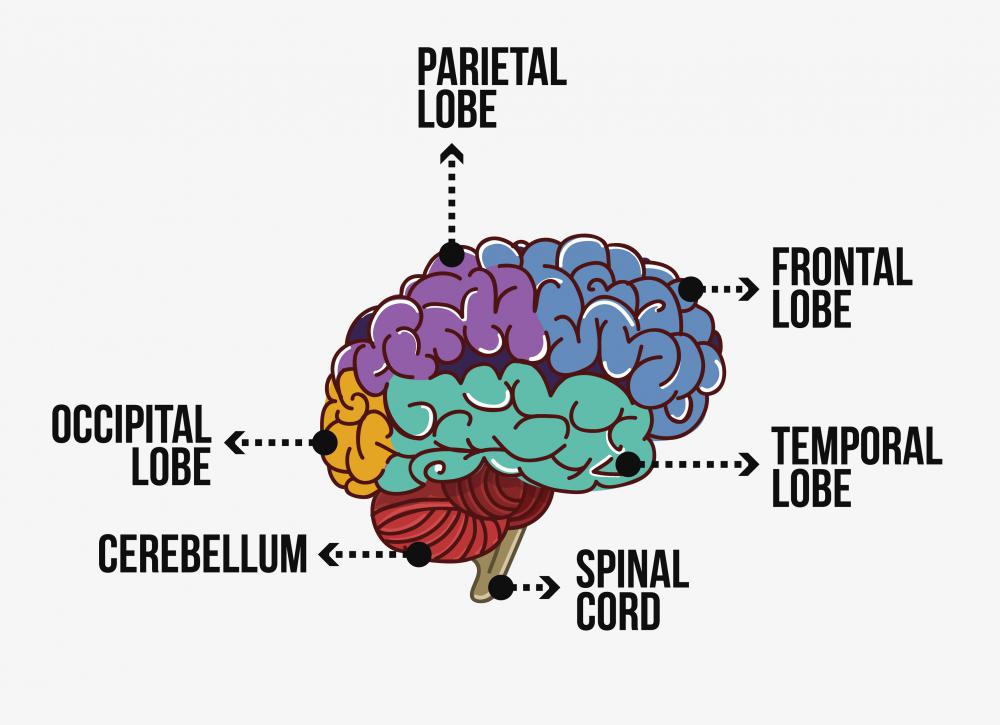At TheHealthBoard, we're committed to delivering accurate, trustworthy information. Our expert-authored content is rigorously fact-checked and sourced from credible authorities. Discover how we uphold the highest standards in providing you with reliable knowledge.
What Is the Right Parietal Lobe?
The right parietal lobe is a portion of the brain that has many important functions in language and mathematical reasoning. Though it shares some functions with the left parietal lobe, the two lobes' responsibilities are more different than alike. Individuals who are left-handed use their left parietal lobe less than their right. Damage to the lobe can result in impairment of spatial memory.
Humans' brains have two parietal lobes at the top back of the brain. Overall, the lobes process information from the physical senses: touch, taste, smell, pressure and temperature. For interpreting sensory input, each lobe is responsible for the opposite side of the body. For example, if one were to stub his or her left toe, the right parietal lobe would interpret that signal of pain. Outside of this shared responsibility, the functions of the right and left parietal lobes are very different.

The right parietal lobe's primary function is to understand the spatial relationship in objects one sees. Recognizing patterns is essential to nearly all problem solving, a trait that allowed early humans to survive. Spatial reasoning is an extension of this skill. For example, a master chess player has the ability to see many moves ahead by constructing and then manipulating a mental image in his or her mind. A developed right parietal lobe is responsible for this skill when applied to chess or any other problem where one needs to make the right choice in a given situation.

One's dominant hand is an indicator of which parietal lobe is more developed. The majority of humans are right-handed and have a more developed left parietal lobe; these individuals generally have a propensity toward better developed language and/or mathematics skills. Left-handed individuals have a more highly developed right parietal lobe and show high functioning spacial reasoning skills. Though a debate currently exists of whether or not left-handedness is an indication of greater intelligence, as of 2011, no peer-reviewed studies have shown a measurable disparity between the intelligences of right- and left-handed people.

As with all parts of the brain, damage to this lobe can cause impairment. A noticeable effect of damage to this lobe is the loss of ability to find one's way, even in places that are familiar. Becoming lost becomes very easy despite having formed a memory of traveling to and from an area.
AS FEATURED ON:
AS FEATURED ON:













Discuss this Article
Post your comments